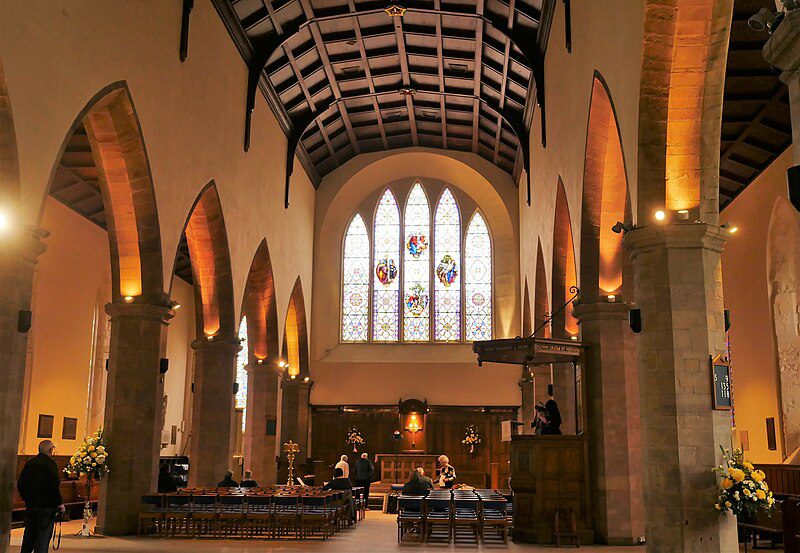Studying the history of Scotland, you can notice that the church has always played a significant role there. It was important not only in public administration and solving the main issues of the country’s population. Its architectural value has also become an inseparable part of the region. Local churches are real witnesses of the past. Learn more at edinburgh-future.
Greyfriars Kirk is such an object. This church is located in the old part of Edinburgh and is considered an architectural monument.
Prehistory
Speaking about the history of Greyfriars Kirk, it is worth mentioning the events that took place long before its construction.
Franciscan monks (of the Order of Friars Minor, also called The Franciscans) arrived in Scotland for the first time in 1447. Later, they settled in the old part of Edinburgh, on the corner of The Grassmarket and Candlemaker Row.
They lived for quite a long time there until the St John’s Chapel was allocated for them in 1464.
It should be noted that the monks were quite closely connected with the most important historical figures at the time, including James IV, Mary of Guelders and Henry VI of England.
Further events
According to various sources, about 50-60 monks lived in the monastery in the middle of the 16th century.
Everything was fine until the community was involved in the events of the Scottish Reformation in 1558.
Reformers stole the statue of Saint Giles from St Giles’ Cathedral.
The monks wanted to use the statue for the Saint Giles’ Day celebration.
However, Reformers dispersed the procession and damaged the statue quite badly.
Later, Franciscan monks had to seek shelter in their allies and leave Scotland altogether.
Some of Edinburgh’s buildings remained Franciscan’s abodes for a long time. After they finally left the country in 1560, the buildings remained empty and were demolished in 1565. The remaining stones, which were the main building material, were used to build the New Tolbooth and repair the walls of St Giles’ Cathedral and the local cemetery.
Decision of local authorities

The history of Edinburgh is full of amazing and closely related facts.
The event of 1584 also seriously influenced the subsequent course of the city’s history. In that year, the Edinburgh city council issued a decree dividing the city into four parishes. One of them was the South-West parish, which included the territory of St Giles’ Cathedral.
However, St Giles’ Cathedral became too small for the Edinburgh parishioners by the end of the 16th century.
Therefore, the city council decided to start building a new church in 1601. They decided to place it in the southern part of the Greyfriars cemetery.
Its construction began in 1611 and the first liturgy dedicated to the funeral of William Couper, Bishop of Galloway (Bishop of Galloway) was served there in February 1619.
Amazing building
Greyfriars Kirk witnessed many important events of the past. It is proved by the subsequent history of its development.
When Oliver Cromwell’s troops managed to get close to Edinburgh in 1650, all the local male population who were fit for military service received a kind of order to gather at the specified time on the territory of the church.

Cromwell captured the city when the Covenanters were defeated in the Battle of Dunbar.
During 1650-1653, Cromwell’s troops occupied the church, actually turning it into cavalry barracks. Of course, it caused considerable damage to the building.
Damage and repair
In 1706, Edinburgh city council decided to use the tower at the west end of Greyfriars Kirk. Actually, it turned into a powder warehouse.
However, on May 7, 1718, it suffered a strong explosion, which also seriously damaged the church.
Later, the city started repair work. The process was headed by Alexander McGill.
Two new spans were added during the construction. Thus, Greyfriars Kirk was divided into two equal parts.
The restoration was completed on December 31, 1722. The costs of the work were largely covered by the local duty on ale.
After that, the Edinburgh city council issued an order to create a new congregation. Most likely, such an initiative was formed because of the church division.
As a result, the new congregations were named Wester Greyfriars (later, New Greyfriars) and Old Greyfriars.
New misfortune
It seemed that all the turbulence was behind, but a row of misfortunes continued.
On January 19, 1845, the church suffered a severe fire due to overheating of its chimney. The Old Greyfriars part was especially badly damaged, while New Greyfriars sacrificed its roof and furniture.
Restoration works and the process of their organization took a lot of time. Still, they were implemented and the church underwent some changes.
Thus, the Old Greyfriars part acquired stained-glass windows. It was a real novelty back then.

In general, we can say that the history of the church is very eventful. Each of its periods is associated with certain changes and innovations. Many of them were rather radical.
Old and New Greyfriars merged in 1929 and the wall that separated them was removed too.
The following years were remembered for new mergers with such congregations as Lady Yester’s Kirk and New North Church. They joined Greyfriars in 1938 and 1941.
However, this is the topic for another article.
Greyfriars Kirk is quite rightly called one of the most interesting buildings in Edinburgh. After all, each of the church’s features is unique, from its architecture to its extremely eventful history.